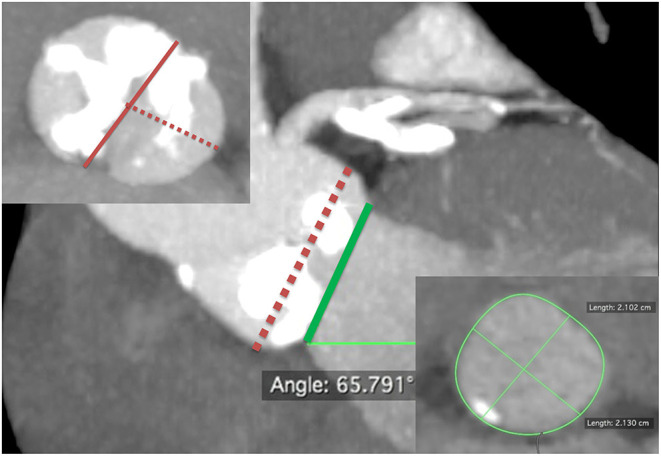Figure 1.

Comprehensive sizing method or the Wei's method of transcatheter aortic valve replacement for bicuspid aortic valve. First, identify a supra-annular plane at end-systole with maximum aortic leaflet opening, which predicts transcatheter heart valve (THV) prosthesis anchoring. Usually, this is at the narrowest part in the aortic valve leaflets with the most severe and asymmetric calcifications, fibrosis, or raphes, whichever makes valve anchoring feasible (central panel, red dash line). Next, measure the maximum diameter (usually, the inter-commissural distance, left upper panel, red solid line) and the minimum diameter (the shortest distance between the leading edge of the chunk of calcium/fibrosis/raphe and the opposite aortic wall, left upper panel, red dash line) at that level. Then, calculate the average diameter: (maximum diameter + minimum diameter)/2. The prosthesis is sized according to the calculated average diameter. Then, the THV is also sized in the same patient on the basis at the level of aortic annulus (central panel, green solid line) of annular area-derived diameter (conventional annular sizing method, right lower panel). If the proposed THV sizes from the two methods disagree, the prosthesis is sized according to the plane (annular or supra-annular) with the smaller derived diameter.
